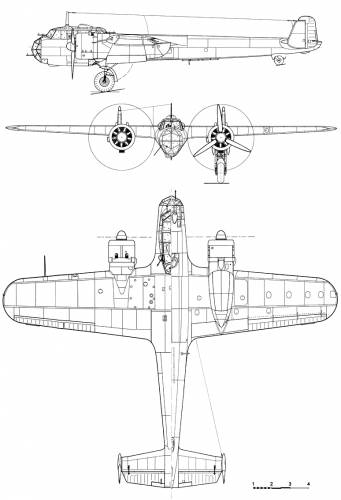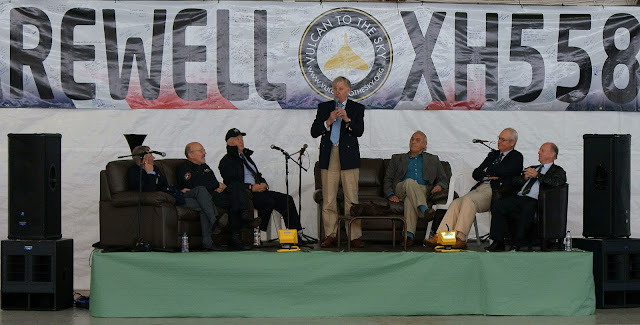The aviation phenomenon, much mooted in recent years, and simply known as "The Vulcan Effect" has reached its climax as Vulcan XH558 comes to the end of its second flying career. Albeit much shorter than its first flying career, its second stint made her one of the most photographed and revered aircraft on the airshow circuit in the UK, ever since the first air displays at RAF Hendon. One that created a following and support that raised the not inconsiderable sums of money for to put her in the air and keep her there for eight glorious years, years that brought pleasure to millions of people from ex-air and ground crew through enthusiasts to youngster who have been inspired.
On Sunday 4 October 2015, XH558 had two display appointments, both at sell-out events, the first of which at Gaydon in Warwickshire, the ex-RAF station and V-Bomber Training base in the Fifties and Sixties, now one of the UK's most prestigious automotive centres. The second display was to take place at the Shuttleworth Collection's Season Finale Air Show at Old Warden in Bedfordshire.
Prior to the weekend stark warning message had been sent out by the Vulcan To The Sky Trust to beg people not to turn up at Robin Hood Airport after the local Police Authority had "threatened" to put a stop to the flight if crowd were to descend on the immediate vicinity of the airport and clog up road, emergency exits etc. Also, around Gaydon and Old Warden, most roads had been "ballarded" by the Police and were actively patrolled to remove any vehicles parked alongside them. However, people walked for miles to find a vantage point along public footpaths and bridleways to catch a glimp, a distant photographs or videoclip as a final souvenir.
Having resigned myself to the fact that my final pictures of XH558 in flight had been taken at Coventry Airport a few weeks earlier I decided against driving down to Gaydon, Instead I would track aircraft's progress on the XH558 app and emerging pictures on social media. I followed some early messages on social media and one in particular caught my attention. It had been tweeted by one of my Twitter contacts and read "contrary to earlier message the M40 junction near Gaydon is open in both directions, but roads full of ballards. Suggest viewing from Burton Dassett Hills Country Park". Not knowing the area in much details I consulted the oracle, Google Maps, and found that the location was approximately 2.5 miles from Gaydon, not ideal, but at least the display would be visible.
 |
| Hazy conditions and the sun in the wrong place still produced an evocative image |
Mrs C prepared some bits and pieces for a picnic whilst I got cameras, seats etc out and off we set, guided by the trusted satnav. Arriving at the country park and having paid the entry fee of £2 (a lot less then that those at Gaydon had paid!) I drove as far as possible, but most of the car parks were already pretty full at around 12:30. We found a spot for the car and hill next to it as our vantage point. I must have passed this place many a time driving up and down the M40 motorway, but never realised just how high these hills are, the view was terrific with clear view toward Gaydon as well as the approach from where the Vulcan was due to come and departure route for flying on to Old Warden.
 |
| Without the haze she looks more colourful |
The entertainment, a side effect the "The Vulcan Effect", was amusing with literally hundreds of cars turning up in the park and trying to find somewhere to park. Some of the ensuing chaos and awkward situations were passed off with great humour and not a bad word was heard. The country park's taking for the day would have been many times more than usual and the ice crams van made a killing.
 |
| The People's plane fades into the distance and into history for most atop these hills. |
The tracker app showed at 12:57 that the crew were in and by 13:37 XH558 was airborne and on her way south,so we thought. A slight change of flight plan had been introduced to team up with a bunch of Spitfires and Hurricanes over RAF Coningsby for the LLA day.
Having left RAF Coningsby, the pilots for the day, Kev Rumens and Phil O'Dell, apparently, performed a full roll near Grantham. There is a short piece of footage on YouTube showing the maneuver. Was it for real, it looks it or was it a hoax?
At 15:42 with binoculars offered up to the old eyeballs, I spotted something in the distant haze coming south past Coventry and there she was gliding along silently. What followed was a standard full display that appeared not to be using the old runway as it centre line, but more across it, perhaps to avoid overflying the M40 at low level.
Emotions round and about were running high, especially when the display came to an end and it was clear that the route to Old Warden was straight over the country park, no the actual hill we were standing on.
The first photograph shows XH558 approaching our position, not the best of conditions, but it did produce an evocative image.
The next photograph did not happen as I had to zoom out so quickly I missed the shot and recovered sufficiently for the second picture above. Whoever was at the controls, Kev or Phil, must have spotted the large crowd covering the hills as the aircraft's port wing dropped as a sort of goodbye.
The last photograph illustrates that for many people gathered on Burton Dassett Hills this would be the last time they would see this icon of British aviation engineering flying off into the distance and into history.
Two more public flying days are ahead on 10 and 11 October when the Farewell Tours will be flown, one northerly route and one southerly, no displays, just flybys at various locations. And that will be the end of the public flying of Avon Vulcan B2 XH558.
Also to an end comes a project that was conceived in the late Nineties and thanks to XH558's owner after having been purchased from the RAF, David Walton, who ensured the aircraft was kept in excellent running order.Without that the Vulcan To The Sky Trust would not have had a viable airframe to return to flight.
The initial financial support came from a bunch of enthusiasts and ex-RAF crew members that formed the 558 Club in 1997. I joined in the autumn of that year and with membership number 32 I am one of the founding members of what is today The Vulcan To The Sky Club, an organisation that has grown from strength to strength and over the years has raised hundreds of thousands of pounds towards that second flying career. With Lottery funding and a financial rescue by the late Sir Jack Hayward, the restoration was completed in 2007 and the first flight took place on 18 October the same year. But.the coincided with the global financial world taking a severe nosedive and the hoped for corporate sponsorships evaporated into thin air.
The project to restore the Vulcan to flight and subsequently operate her on the display circuit for 8 years was largely down to the overwhelming public support, which was needed to supplement the industrial support from various well known organisations. That's why XH558 was known as the People's plane and that's why, in her final flying days, hundreds of thousands of people, including Mrs C and I, have flocked to venues where we could bid her farewell, sad that it is over, but so glad to have seen it and for me have been a small part of it.
What will be the next classic Avro to fly, Lancaster NX611 or Shackleton WR693 and will it or both attract the amount of support Vulcan XH558 has enjoyed. Only time will tell.
Theo Claassen
6 October 2015










































